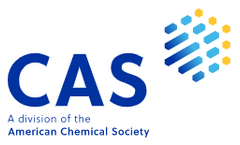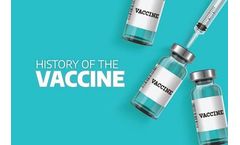Measles Articles & Analysis
22 articles found
For centuries outbreaks of numerous diseases called pandemics would plague human populations in large regions or even world-wide. Throughout history there have been a number of widespread pandemics the most devastating being the Black Death pandemic that killed over 75 million people in the 1350’s and the latest being influenza outbreaks, also known as the Spanish flu, in 1918 and ...
In addition to the more common vector systems, rare disease research companies are also developing other viral vectors for targeted gene therapy, including measles virus vectors, foamy virus vectors, flavivirus vectors, Newcastle disease virus (NDV), picornaviruses, etc. ...
While the impact of this has yet to be fully realized, an example is the 400% increase in measles cases reported in Africa compared to the same time in 2021. Beyond vaccination resiliency, researchers are also working to identify what defines a health system’s ability to stay resilient against infectious diseases. ...
COVID-19 and viruses are a concern for all of us. Yet, anticipating a virus’s impact on an unborn child has heightened during the coronavirus pandemic for pregnant women or those expecting. However, there are tips you can take to protect yourself from viruses. ...
They cause several different types of disease, most of which are transmitted by respiratory droplets. They include measles, mumps, canine distemper, parainfluenza, and recent transmission of henipavirus disease from animals to humans. ...
Innovations and Iterations In the consumer tech world, iterations happen very fast, though most inventions are not ‘one and done’ masterpieces: the Dyson cyclone vacuum cleaner made 5,127 prototypes. In the medical device world, development takes longer because of the appropriate and necessary regulations and need for safety. Using an agile approach, but with safety and reliability ...
Airborne transmission happens when a bacteria or virus travels in aerosolized droplet nuclei that remain suspended in the air until a healthy person inhales the infectious agents. Measles and chickenpox are examples of diseases that spread through airborne transmission. ...
Though vaccinations prevent between 2 and 3 million deaths per year, evidence of vaccine hesitancy can be seen through the resurgence of preventable diseases, including polio, diphtheria, and measles. Factors Leading to Vaccine Hesitancy Since the first vaccine was developed in 1798 against smallpox, there have been people who were in favor of vaccinations, those who were ...
Since then, there has been a decrease in cases of many different vaccine-preventable diseases: since 2003 there have not been any deaths caused by measles, in 2011 Ghana was certified to have eliminated maternal and neonatal tetanus, and the cases of poliomyelitis have dropped as well. ...
Some vaccinations, such as those for highly contagious diseases including measles, mumps, rubella, chickenpox, and diphtheria, are now commonly required for children to attend school, unless medically contraindicated. ...
The first vaccine, created by Edward Jenner, was used to fight against cowpox in 1796 in England. Though rarely seen today, cowpox, a viral infection, was contracted often by milkmaids before the late 1700s. When someone touched the udder of a cow that was infected, they could contract cowpox. The cowpox virus is like smallpox; however, it is not as deadly as smallpox. Smallpox is a virus that ...
Worldwide, vaccines annually prevent millions of deaths, and their utilization is responsible, in many parts of the globe, for the nearly total eradication of numerous diseases, including polio, measles, and smallpox. According to the U.S. Centers for Disease Control (the "CDC"), a vaccine for a specific disease stimulates an individual's immune system, causing it to produce ...
Having attracted foundations, government agencies and pharmaceutical companies as partners, Micron has three Phase 1 and three Phase 2 clinical trials planned through 2022. The company’s measles-rubella vaccine candidate – which recently received a $2.6-million second tranche of funding from the Bill & Melinda Gates Foundation and is funded through Phase 2 by the ...
Immunization prevents two to three million deaths every year from diseases such as hepatitis, pertussis (whooping cough), influenza, and measles. In spite of this, more millions of deaths could be avoided if temperature-dependent vaccines were transported and stored ...
ByAKCP
The update to their guidance explains airborne transmission and likens its risk of airborne infection to that of tuberculosis, measles and the chicken pox. This comes after a mishap 2 weeks ago when guidance was published, then promptly removed citing, “a posting mistake” made by the ...
Vaccines have antigens similar to viruses that cause chickenpox, mumps, and measles. For instance, the influenza vaccine may contain the genetic code of certain strains. ...
ByAKCP
A sudden surge in vaccine demand caused by the development of a COVID-19 shot could put labs under extreme strain and also reduce the availability of other vaccines that are regularly needed to immunize people against the seasonal flu or childhood diseases such as measles or rota virus. So, how does everybody work together to produce billions of doses to vaccinate the whole ...
An incinerator is needed One particular goal of UNICEF is to reduce child mortality, the progress of which is monitored by a number of indicators such as the ‘proportion of 1 year old children immunised against measles’ since measles is one of the leading causes of death among small children and kills 16 people every hour. This correlates with the ...
These were the chosen countries to introduce a state of the art incinerators to help tackle the Measles and HIV outbreak that plagues millions of people. Client Overview The MRC’s focal point is medical science that will provide life changing improvement to the health systems in both the UK and in Africa. ...
When we think of major health threats to people in Africa we often recall HIV/ Aids, Malaria or other preventable diseases such as Polio or Measles, yet there is a threat present in almost every home which takes more life than these well know conditions, almost no one outside Africa is aware of it and It lives in the heart of every ...

















